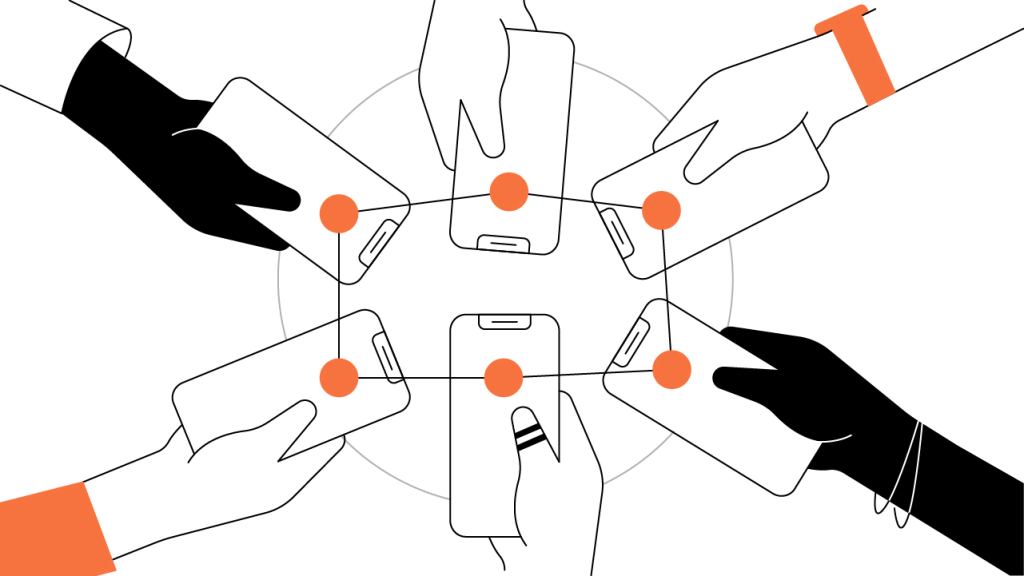Contents
How dApps Can Revolutionize Finance
Blockchain’s revolutionary effect on finance is no longer a potentiality, but a reality as dApps are already providing value and utility to consumers.
Updated June 22, 2021 • 4 min read

Summary
Decentralized finance (DeFi) and decentralized applications (dApps) allow anyone with an internet connection to participate in a new generation of financial services. DeFi dApps represent a formidable alternative to traditional financial services, and they are growing in popularity thanks to the trustless, immutable, and transparent characteristics of blockchain.
Decentralized applications (dApps) are web services built on top of a blockchain. Using a blockchain like Ethereum allows applications to be trustless (i.e., they do not require participation or verification from centralized, third-party intermediaries), transparent (i.e., all transactions and activity are freely and easily accessible and viewable to the public), and immutable (i.e., all transactions and activity are validated and secured to the blockchain and cannot be tampered with). And, while dApps can be designed to provide any type of web service (e.g., games, file-sharing networks, and social media platforms), the most widely discussed use for dApps is in financial services, as evidenced by the notable growth of decentralized finance (DeFi).
Starting with MakerDAO, the first noteworthy wave of dApps was launched in 2017, the same year that Initial Coin Offerings (ICO) on Ethereum achieved widespread popularity. Although the Bitcoin network supports dApps to some extent, the vast majority of dApps are built on Ethereum. DeFi dApps allow for lending, borrowing, and a host of other financial services that are typically offered by centralized service providers. DeFi projects have already captured billions of dollars in value and look to continue this trend as more and more people become aware and familiar with their unique value proposition.
Benefits of Decentralized Apps
Unlike traditional software that runs on centralized servers, dApps run on a decentralized network of censorship-resistant nodes that are difficult to shut down. Given the transparent nature of the blockchain, most dApps feature open source software, which users can examine and audit themselves.
Most blockchain protocols on which dApps are built are secured and incentivized through either a Proof-of-Work (PoW) consensus mechanism, a Proof-of-Stake (PoS) consensus mechanism, or a combination of both. While there are many other types of consensus mechanisms, these two are by far the most prevalent. These consensus mechanisms work to maintain network security while avoiding centralization issues in their own respective ways. Additionally, dApps are typically designed to give users the incentive — typically through token rewards — to maintain the security, transparency, and operational effectiveness of the dApp itself. Perhaps most importantly, dApps are global and available to the vast majority of the population via the internet.
dApps on Ethereum and Beyond
The launch of the Ethereum platform in 2015 led to the eventual creation and proliferation of dApps beginning in 2017. Most of the earliest Ethereum dApps were games or simple decentralized marketplaces, and the dApp ecosystem only truly began to expand across a broader range of industries in 2020. Ethereum, with its first-mover advantage, continues to dominate the dApp space, and the number of dApps and DeFi platforms on Ethereum has grown exponentially with transaction volumes in the hundreds of billions of dollars. As developers continue to imagine and create entirely new types of dApps, new development is increasingly expanding beyond Ethereum, with other blockchains such as EOSIO and Cardano now building out their own dApp ecosystems.
Decentralized applications can be designed to provide a wide range of financial services, including:
Reserve banking
Synthetic asset and derivatives trading
Prediction markets and decentralized marketplaces
Yield farming and liquidity pools
Automated contract settlement
Stablecoin interoperability
Decentralized applications provide parallel services to the banking and financial services industry, with some additions. With transparency and 24/7 activity at reduced costs, dApps arguably lower the barriers to entry for financial services.
For example, let’s say you need a fiat loan, but don’t want to sell your cryptocurrency to obtain one. In this instance, you could use a dApp to get an immediate “flash” loan simply by putting up your crypto as collateral. The dApp would settle the transaction automatically and transparently via its smart contracts, which govern the dApp’s rules of engagement. These same smart contracts would also promptly return your deposit once you pay back your loan or collect your deposit as collateral in the event that you default — all without a centralized intermediary.
dApps Are the Building Blocks of the Future
DeFi dApps are not just for simple applications. Developers can design decentralized autonomous organizations (DAOs) that operate as apparatuses governed through code democratically voted upon by users. The emerging marketplace of DeFi Ethereum dApps is being built with composability in mind, which means that different services can be used interoperably to fulfill a near-limitless range of intended use cases. Sometimes referred to as “money legos,” dApps can be stacked on top of each other and are highly modular, yet intuitive and simple from an end-user perspective.
The decentralized lending platform Maker and stablecoin DAI can function as building blocks to access dApp services on Compound, Yearn.Finance, Uniswap, and many others. Decentralized applications like Compound are algorithmically automated to maximize returns. Further, there are dApps that strictly focus on data and analytics and offer users an easy way to optimize their financial returns. In short, dApps are already furnishing the core functionality that may actualize the paradigm shift away from centralized financial services to a decentralized model.
A Paradigm Shift in the World of Finance
DeFi dApps represent a formidable alternative to traditional financial services, and they are growing in popularity thanks to the trustless, immutable, and transparent characteristics of blockchain. Internet users can participate in this new generation of financial services without the need for centralized permission structures and rent-seeking intermediaries. Given the number of innovative dApps that are already providing value and utility to consumers, blockchain’s revolutionary effect on finance is no longer an issue of potential, but a very real phenomenon.
Cryptopedia does not guarantee the reliability of the Site content and shall not be held liable for any errors, omissions, or inaccuracies. The opinions and views expressed in any Cryptopedia article are solely those of the author(s) and do not reflect the opinions of Gemini or its management. The information provided on the Site is for informational purposes only, and it does not constitute an endorsement of any of the products and services discussed or investment, financial, or trading advice. A qualified professional should be consulted prior to making financial decisions. Please visit our Cryptopedia Site Policy to learn more.

Is this article helpful?


